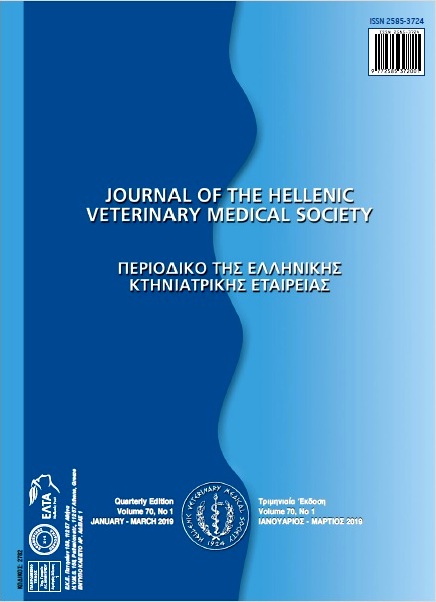Laparoscopic castration in stallions with two different testicular blood vessels occluding techniques
Abstract
Castration of horses is indicated for many reasons and could be performed with variable techniques. Laparoscopic castration is an improved choice. Laparoscopic castrated horses have better cosmetic appearance, return rapidly to normal physical status and have little postoperative complications. The main challenges during laparoscopic castration are obtaining an optimal visualization of the internal inguinal orifices and their content of vas deferens and testicular blood vessels and appropriate occlusion and transaction of the testicular blood vessels to obtain avascular atrophy of the testicles that remains in situ within scrotum. Laparoscopic castration was performed in horses lied in lateral recumbency for better visualization of the target structures and two methods for vascular occlusion were compared. Endo-clipping is effective testicular vessels occluding method and more reliable than bipolar cauterization. Lateral recumbency layout decreased risks of hemodynamic changes during surgery and provided optimal visualization of the surgical field.
Article Details
- Come citare
-
EL-KHAMARY, A. N., & EL-SHERIF, M. W. (2019). Laparoscopic castration in stallions with two different testicular blood vessels occluding techniques. Journal of the Hellenic Veterinary Medical Society, 70(1), 1429–1434. https://doi.org/10.12681/jhvms.20351
- Fascicolo
- V. 70 N. 1 (2019)
- Sezione
- Research Articles

Questo lavoro è fornito con la licenza Creative Commons Attribuzione - Non commerciale 4.0 Internazionale.
Authors who publish with this journal agree to the following terms:
· Authors retain copyright and grant the journal right of first publication with the work simultaneously licensed under a Creative Commons Attribution Non-Commercial License that allows others to share the work with an acknowledgement of the work's authorship and initial publication in this journal.
· Authors are able to enter into separate, additional contractual arrangements for the non-exclusive distribution of the journal's published version of the work (e.g. post it to an institutional repository or publish it in a book), with an acknowledgement of its initial publication in this journal.
· Authors are permitted and encouraged to post their work online (preferably in institutional repositories or on their website) prior to and during the submission process, as it can lead to productive exchanges, as well as earlier and greater citation of published work.



